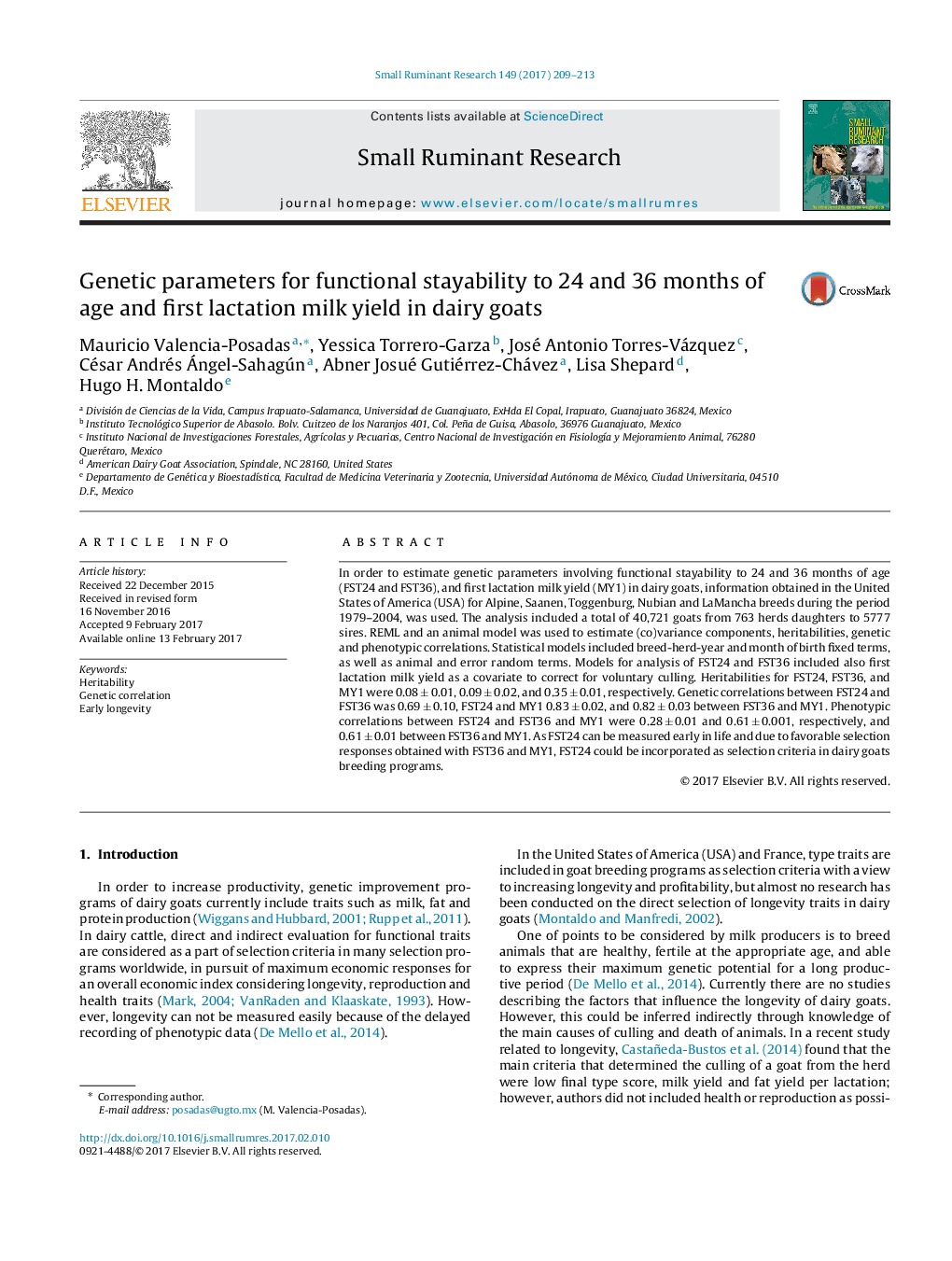| Article ID | Journal | Published Year | Pages | File Type |
|---|---|---|---|---|
| 5544257 | Small Ruminant Research | 2017 | 5 Pages |
â¢Genetic parameters for early functional stayability and milk yield were estimated.â¢Genetic correlations were high.â¢Selection on stayabilty to 24 months showed a moderated response on milk yield.â¢Stayability to 24 months can be included as selection criteria in breeding programs.
In order to estimate genetic parameters involving functional stayability to 24 and 36 months of age (FST24 and FST36), and first lactation milk yield (MY1) in dairy goats, information obtained in the United States of America (USA) for Alpine, Saanen, Toggenburg, Nubian and LaMancha breeds during the period 1979-2004, was used. The analysis included a total of 40,721 goats from 763 herds daughters to 5777 sires. REML and an animal model was used to estimate (co)variance components, heritabilities, genetic and phenotypic correlations. Statistical models included breed-herd-year and month of birth fixed terms, as well as animal and error random terms. Models for analysis of FST24 and FST36 included also first lactation milk yield as a covariate to correct for voluntary culling. Heritabilities for FST24, FST36, and MY1 were 0.08 ± 0.01, 0.09 ± 0.02, and 0.35 ± 0.01, respectively. Genetic correlations between FST24 and FST36 was 0.69 ± 0.10, FST24 and MY1 0.83 ± 0.02, and 0.82 ± 0.03 between FST36 and MY1. Phenotypic correlations between FST24 and FST36 and MY1 were 0.28 ± 0.01 and 0.61 ± 0.001, respectively, and 0.61 ± 0.01 between FST36 and MY1. As FST24 can be measured early in life and due to favorable selection responses obtained with FST36 and MY1, FST24 could be incorporated as selection criteria in dairy goats breeding programs.
